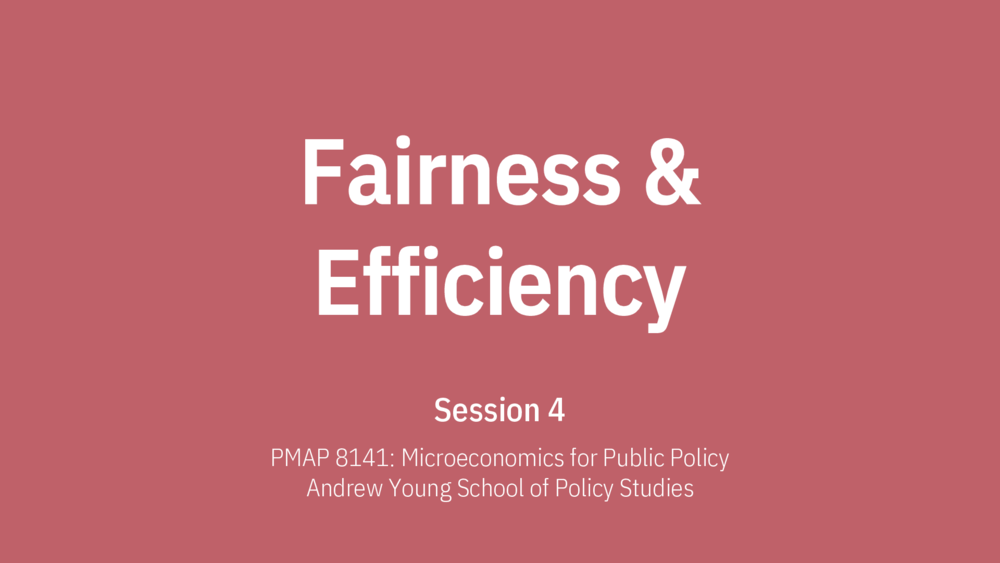Public policy for fairness and efficiency
Readings
- Introduction and 3.1-3.11 in Economy, Society, and Public Policy1
- The Veil of Ignorance
- The Fairness Principle: How the Veil of Ignorance Helps Test Fairness
- Planet Money, “Retraining Day,” episode 750, January 27, 2017
- Planet Money, “The Bottom of the Well,” episode 640, July 22, 2015
- Alberto Alesina and George-Marios Angeletos, “Fairness and Redistribution: US vs. Europe”2
- Download the PDF here, or access it on iCollege.
- This one is super mathy in the middle. Use your grad school reading skills to dig deep into the introduction, conclusion, and theory sections and not worry so much about the math.
Other useful resources
The equality/equity/justice meme that we talk about in the lecture is a helpful way of thinking about how to remove institutional barriers to fairness and justice, but it also isn’t completely adequate because of some of the underlying assumptions built into the graphic. Here are a couple critiques:
- https://fakequity.com/2017/04/28/can-we-stop-using-the-box-graphic-when-we-talk-about-racial-equity/
- https://culturalorganizing.org/the-problem-with-that-equity-vs-equality-graphic/
In any case, striving for justice (i.e. removing the institutional barriers preventing people from flourishing in the first place) is a noble and worthy goal for public policy.
Slides
Download the slides from today’s class.

Videos
Videos for each section of the lecture are available at this YouTube playlist.
You can also watch the playlist (and skip around to different sections) here:
-
The CORE Team, Economy, Society, and Public Policy, 2019, https://www.core-econ.org/espp/. ↩︎
-
Alberto Alesina and George-Marios Angeletos, “Fairness and Redistribution: US Vs. Europe,” American Economic Review 95 (2005): 913–35. ↩︎